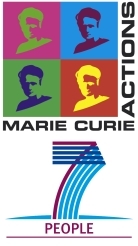Project Overview
Articular cartilage is the off-white firm, visco-elastic tissue covering the end of each bone at the joints. Cartilage has no known function other than maintaining mechanical competence of joints, allowing bones to move against one another without friction. But there is no need to underline its significance to health of a human body, since almost all the load transmitted by a human joint goes through the articular cartilage, and it prevents biomechanical damage caused by severe loading.
Osteoarthritis (OA) is a degenerative disease which involves deterioration of the articular cartilage and affection of the underlying bone. In OA, the cartilage thins, begins to fragment and wear away. Bits of cartilage or bone can break off and float inside the joint space interfering with the joint movement, eventually distorting the originally smooth surfaces of the joint. In severe forms of the disease, the cartilage wears away entirely that leaves bone rubbing against bone. All this bears a strong resemblance to wear process that occurs in tribological systems. However, unlike the contact interaction between coated machine elements, OA causes severe pain, pathological changes and disability, and so dramatically reduces quality of life.
At present, there are no effective medical treatments to cure the OA degradation of articular cartilage. Treatment of articular cartilage degeneration is challenging because this tissue is incapable of quality repair or regeneration. Currently the only feasible treatment options are to manage the pain of OA or to realign, resurface or totally replace the joint surgically. Therefore, early detection of OA and the ability to monitor the disease progression are important for developing efficacious therapies. Unfortunately, current diagnostic tools including radiography and magnetic imaging can detect cartilage degradation only at advanced stages of OA, when structural and functional damage and destruction are irreversible. Recently, Stolz et al. (2009) suggested a breakthrough new minimally invasive methodology for in situ health monitoring of articular cartilage based on indentation type atomic force microscopy. The method involves quasi-static time-dependent indenting the articular cartilage with a nanometric-sized tip and simultaneous recording the changes in the indenter’s tip displacements and loading in the range of nanometers and nanonewtons. This information allows one to evaluate the articular cartilage nanostiffness that reflects subtle structural changes of articular cartilage that occur during aging and at the onset of OA.
Despite the large amount of new information gleaned from in vitro and in vivo studies on OA, there remain challenges to understanding how to modify the complex process involved in OA pathogenesis. Today, mathematical modelling plays a crucial role in analyzing biomechanical systems. However, many of the mathematical models developed for describing articular contact mechanics become so complex that only numerical solutions by computer seem to be feasible. This comes in apparent contradiction with the necessity to have a clear understanding of the underlying principles of OA, the causes of variation in articular cartilage properties, the effects of slight gradual changes in cartilage at the onset of OA upon the evolution of the contact distribution pattern.
Asymptotic Modelling (AM) is a complex analytical mathematical technique of analyzing and simplifying mathematical models. AM applied to the existing mathematical models of biomechanical contact would aid in understanding of articular joint mechanics and etiology of the OA process.
Contact Details
Institute of Mathematics and PhysicsAberystwyth University
Physical Sciences Building
Aberystwyth
Ceredigion
SY23 3BZ
Tel: 01970 622 808 Fax: 01970 622 826 Email: imaps@aber.ac.uk
